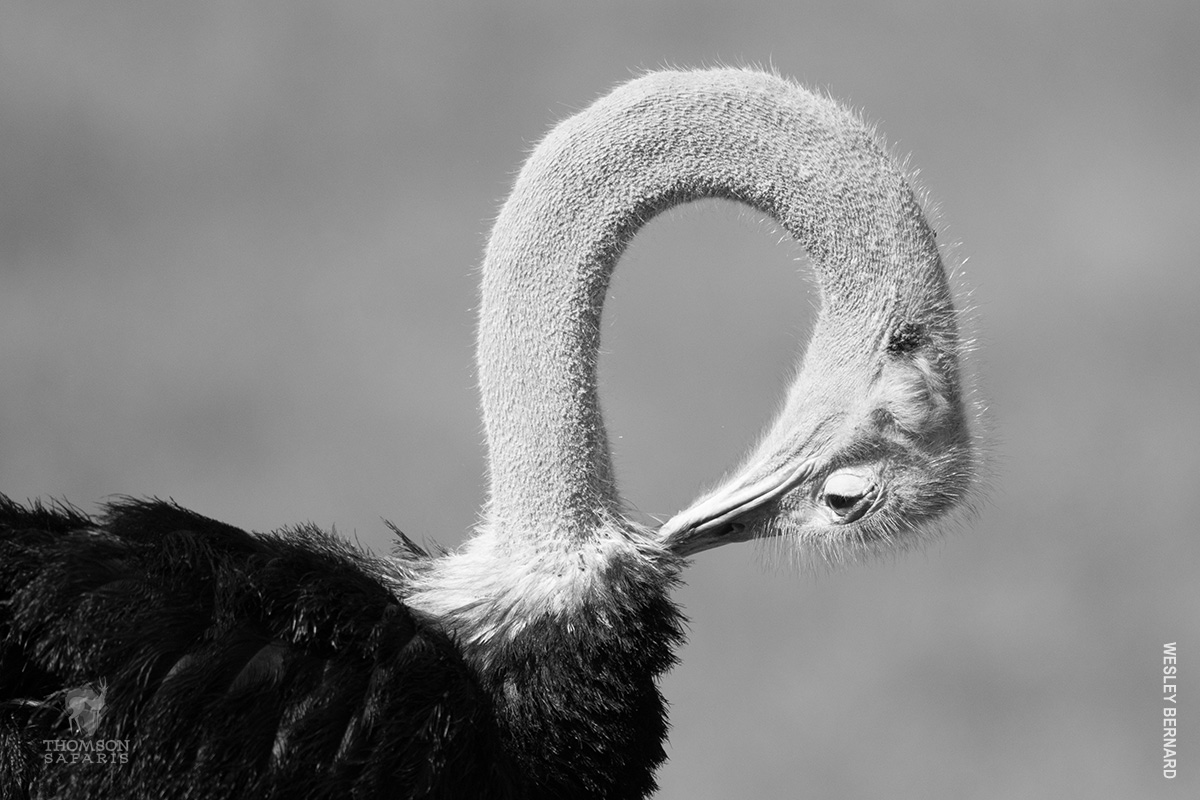How’d You Get That Shot? Photography with Wesley Bernard

Grooming Ostrich – Ngorongoro Crater, Tanzania
Photo: Wesley Bernard
Capturing nature’s most awe-inspiring moments takes much more than good luck and a quick trigger finger. Careful planning, serious skill, and a little bit of luck are needed to create the kinds of unforgettable images that make an African safari so enticing, even from thousands of miles away. The photographs these guests snapped are so impressive, we wanted to learn more about what went into them. In this ongoing series, our most avid photographers share some of the secrets behind the stunning images that make us all wonder “How’d you get that shot?”
Professional photographer, and Thomson Safaris safari photography trip leader, Wesley Bernard joins us today.
ABOUT THE PHOTO
What do you like about this shot?
I like this shot because the male Ostrich is doing something you don’t see very often. Usually they are just standing with their neck extended. This male is preening and grooming, and arching his neck in a beautiful way makes the image unique and abstract.
What type of planning was involved in order to capture this image?
Patience. Once you are on Safari to take photographs you learn quickly to be patient and watch. So the planning is getting set with your composition and wait until something great happens.
Which camera did you use, and why?
In this particular case I used a Nikon d500 and a long lens. The camera only has to be a high quality image maker with a large lens. I have used at least four different camera manufacturers set ups and have learned that the camera matters in as much as it makes high quality images. The photographer is the one that makes the image and not just takes the image.
Which settings did you use? Are there any technical tips you have for photographers who are more advanced?
f/8 and be there, is the old photo joke on how you got your image. In this case I used shutter priority at a high enough shutter speed to not get image shake and to freeze any action that takes place. I like setting my own ISO but I do rely on Shutter priority to pick my shutter speed and at the same time watch that I have the low depth of field so as to isolate the animal from the background. Get to know your autofocus capabilities of your particular camera, this will save you so many lost shots. Also, practice with your camera before you head out on safari.
Which tools, during either the shooting or editing process, did you use to enhance the photo?
In post processing I manipulated the color raw image to a black and white image with great blacks, whites and midtones. Simplicity is best when enhancing images.
What’s your favorite tip to give fellow photographers?
Be patient and don’t spray and pray. This means watch and wait until something amazing happens right in front of you. Do not just take a hundred photos on high speed motor drive and hope you get something. It is better to have the shot of a life time rather than a thousand mediocre images.
ABOUT WESLEY BERNARD
How many years of professional photography experience do you have?
I have been a professional photographer and educator for over 25 years.
What’s your favorite thing to photograph?
Animals. They don’t talk back.
What do you think of Tanzania as an overall photographic opportunity? What made it special to photograph?
Tanzania is one of the most beautiful and enchanting places to experience. It is one of the easiest places to photograph because everywhere you turn there are amazing images to capture. It is unlike anywhere else on earth.
Where can we find your work?
Wesley holds a B.S. in Anthropology and an M.F.A in Documentary Photography, see a wide variety of his work at his site: wesleybernard.com
Want to learn more about photographic safaris with Thomson Safaris?
Contact us today.

